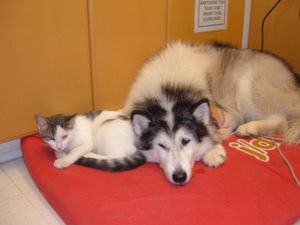Contrary to past years, Sunnyview Animal Care is recommending ALL our clients consider starting their pets on tick prevention medication earlier in 2016. This is a significant change to our policy from past years, & is due to our review of various journal-reviewed information sources in the past few weeks.
In the past year, the distribution & range of tick populations in Canada appears to be increasing significantly given new data released by both the Canadian Veterinary Medical Association (CVMA) here in Canada and, the Centers for Disease Control(CDC) in the USA.
Also, I only recently became aware study from 2001 which confirms what we saw in the past few months at our Bedford, Nova Scotia veterinary practice – that ticks are now moving & looking for hosts [referred to as “questing”] all months of the year given our mild Nova Scotia winters. In fact, data from 2001 shows that adult Lyme disease bearing tick species will “quest” at temperatures as low as -0.6°C! (Although the accepted general minimum average temperature is 4°C for this behaviour).
“In most parts of Canada, tick activity begins when the snow starts to melt in our early spring & continues until the late fall-the adult Lyme disease bearing ticks (Ixodes scapularis aka. the ‘Deer Tick’) prefer cooler weather and can “quest” at any time through late fall into the spring if conditions are appropriate” CVMA CVJ Vol 57 2016, pg. 254.
Given that our family dogs are more likely to be exposed to ticks than we ourselves are, can also bring ticks into our homes, & that testing for the bacterium causing Lyme disease (Borellia burgdorferi) is detected more readily in dogs then in humans; this puts all veterinarians in a unique position to be involved in both the health & well-being of our pets, with our client’s families, & possibly play a role in helping to increase public awareness & educate our clients about this concern.
To this end, Sunnyview Animal Care will be posting some prevention thoughts for our clients & their friends to consider in the coming days, & emailing our clients directly. With new oral tick prevention products, those clients who have concerns with topical applications used in the prevention of ticks & fleas now have other options that are easily combined with oral deworming medication if needed. These products can be given monthly, or every 3 months.
Submitted with respect from Dr. Jeff Goodall, Sunnyview Animal Care in Bedford, Nova Scotia, Halifax Veterinarian, Lower Sackville Veterinarian, Fall River Veterinarian, using various Veterinary Reviewed Source materials. Further Reference Information Available upon Request.
Related Tags – Ticks, Lyme Disease, Lyme disease prevention, Tick Prevention, Tick Concerns, questing behaviour, veterinary treatment, veterinary information, dog care, pet care



